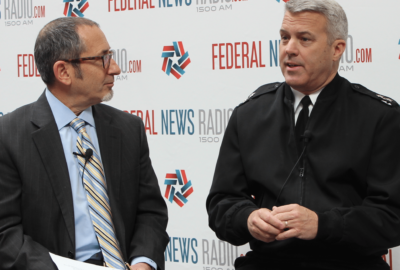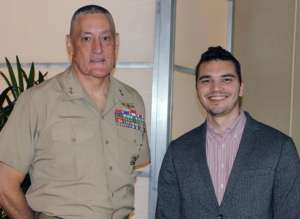
Navy pushing to be more ‘maneuverable’ as it prepares for next conflicts
Expeditionary warfare thinking has evolved to focus on maneuverability in the Navy, not concentrated forces.
The Navy’s strategic thinking about expeditionary warfare is changing. Where once the massing of forces was used to achieve their mission, military leaders now are focusing on maneuverability.
For a long time, the Navy projected the nation’s will because it had air and maritime superiority. In more recent times, however, the service’s strategy evolved to no longer assume that superiority.
With Russia and China wanting to compete globally and across all domains, Secretary of Defense Jim Mattis issued a directive moving the Pentagon’s focus from the Middle East and terrorism, to these two formidable foes.
Now, the U.S. can no longer assume the military have air and maritime superiority at any particular time and location.
“It’s time to up our game,” according to the man who directs U.S. military projection abroad.

“We’re really reinvigorating naval maneuver warfare In deploying sea and land forces today. And we’re doing it in a very complex environment and against challenging threats,” Marine Maj. Gen. David Coffman told Scott Maucione on Agency in Focus. Coffman is the director of the Navy’s broad portfolio of expeditionary warfare capabilities.
Coffman said radical, revolutionary change is required to tackle the problem.
“We are working via analysis and war games experimentation to say we’re going to have to come at this problem in another way than a linear approach,” he said.
What’s vexing Coffman is that he doesn’t have a good answer.
“It’s a pretty exciting conceptual work,” Coffman said. “Problem is … you can’t wait for it to be perfect.”
One idea winning favor within the staff of the Chief of Naval Operations is a departure from the concentration of forces theory, toward the notion of distributed maritime operations.
It’s maneuver warfare at scale, a plan to confront forces coming from multiple threat axes across all domains.
“The Navy is where all the domains come together. Our thesis is that we have to link sea control and power projection. Sea control alone will not win the day,” Coffman said.
What will win the day? Coffman said the thinking is that distributed threats require a response that’s in a distributed fashion.
“I am a believer that it’s going to be a kind of a new version of naval maneuver warfare that allows you to gain the advantage on the threat. You then pick and choose where you apply your strengths and mitigate and protect your weaknesses,” he said.
Strategists believe the only place the military may still hold a significant naval advantage is submarines. And Coffman said the Pentagon is trying to exploit that advantage in ways that rival what drones have done for the Air Force
“I’ve heard great thinkers say if you’re not going unmanned underwater, you’re off-trend because the old fashioned model of coming force on force, coming in bulk, is no longer going to work,” he said.
Navy’s personnel are the primary focus
Discussions about the deployment of expeditionary forces always leads to a micro view of the strategy and the personnel needed to carry out that kind of warfare. At the tactical level, Coffman said human judgment is key.
“The personality of warfare changes, and especially so in times of technological upheaval like we’re in now. But the fundamental nature of war is unchanging, and it’s always centered on the human dimension,” he said. “It’s actually a contest of wills between humans, not a contest of ones and zeroes between machines. Therefore, what we try and do is remember that sailors, marines and special operators are at the end of our efforts and resourcing decisions.”
Coffman said it’s time to reinvigorate a maneuvers-type mindset to focus on the personnel who will carry out future missions. In future conflicts, he said, “We’ve got to out-smart them, and out-tough them and out-agile them.”
Copyright © 2025 Federal News Network. All rights reserved. This website is not intended for users located within the European Economic Area.
Related Stories




